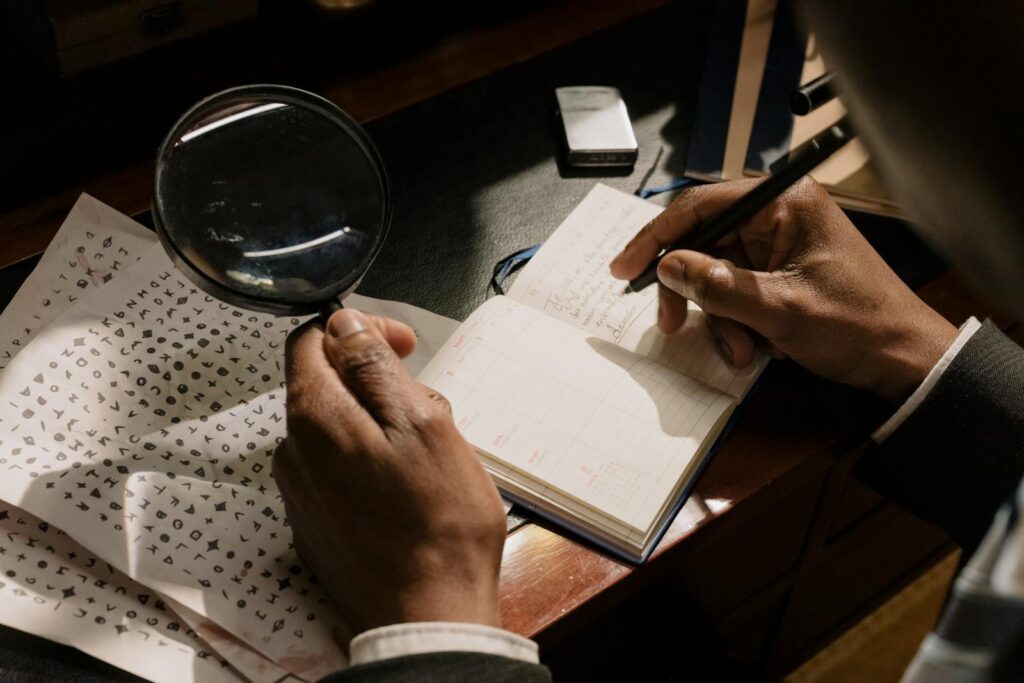Now Reading: Application of Argon Ion Laser in Forensic Science
-
01
Application of Argon Ion Laser in Forensic Science
Application of Argon Ion Laser in Forensic Science
An Argon ion laser is a type of gas laser that generates multiple watts of optical power. It is also a continuous-wave laser. In the blue-green spectral range, it emits a series of strong spectra of coherent monochromatic radiation. 488 nm and 514.5 nm are the two strongest lines. The laser can be operated in all wavelength modes to create a powerful beam of blue-green light, or a prism can be employed to choose a specific spectral wavelength of light. Laser examinations are usually non-destructive and are best used before surgery.
Laser radiation’s monochromatic qualities are especially useful for studying light marks like shoeprints or other marks up close. They have a large boost in brightness when lighted obliquely by laser energy.
After picking the prints, the diverging laser beam is used to ‘paint’ them obliquely. The laser should be operated at a low power level, typically less than 50 mW, and the beam should not be directed at the eyes.
Construction
An Argon ion laser is composed of a long, thin discharge tube formed of beryllium oxide that is filled with argon gas and has two Brewster’s angle windows at each end. Because two mirrors are arranged perpendicular to the length of the tube, the discharge tube acts as an optical resonator. One of the mirrors is somewhat reflective, while the other is completely reflective. A large current flows when a voltage is supplied between cathode and anode. Due to high currents, argon ions travel constantly toward the cathode and electrons toward the anode. Low-mobility ions tend to gather at the cathode, neutralize, and slowly flow back into the discharge tube. To balance the dispersion of argon ions, the discharge tube comprises a return tube. The ions are accelerated by the electric field, resulting in a high temperature of around 3,000 degrees Kelvin. As a result, a cooling system based on water is required. The heated ions impact the tube, perhaps causing damage. This wall damage can be decreased by employing a material with better thermal conductivity, such as graphite. A steady magnetic field parallel to the axis is supplied in the discharge zone to boost the pump rate and output power. This discharge is confined to the tube’s center by this field, which increases the number of electrons near that axis.
Figure 1: Construction of an Ar ion laser (shabbusharma, 2020)
Working
The Argon ion Laser has four levels of operation. When an electric discharge passes through the tube, argon atoms are pumped to energy level E3 by collision with electrons. The first stage involves ionising neutral argon atoms and raising their energy level to E. The ion in the ground state is accelerated to energy level E3 in the second step. Either by spontaneous or induced emission, the excited argon ions in energy levels E3 fall back to energy level E2. Ions in the energy level E2 disintegrate gradually to the argon-ion ground state, emitting a 720 nm photon (ultraviolet photon). To stimulate identical photons, in front of one of the cavity’s mirrors a prism is put to pick a specific wavelength for repeating oscillations.
Figure 2: Energy levels of an argon ion (shabbusharma, 2020)
Advantages
- An Argon laser has a very high gain.
- An Argon ion laser has a wide spectrum, which means it emits a variety of wavelengths.
- When compared to the Helium-Neon laser, the argon laser produces a higher output.
- An Argon laser has an extremely small divergence.
Disadvantages
- It necessitates the use of a high-voltage power supply.
- An Argon laser has a higher cost than a Helium-Neon laser.
- An Argon laser has relatively low efficiency.
- An Argon laser requires a significant amount of power to operate.
Applications
Shoeprints
It is frequently possible to obtain significant amplification of light details in shoe impressions left on objects at the scene of the crime using laser irradiation. Wood, plastic, and vinyl-covered chairs have all yielded positive results. The impressions will develop on an absorbent background in certain cases, while they will be absorbed on a fluorescent background in others. On a luminous background, prints will absorb.
Blood is absorbed in 488 nm light powerfully, and the floor fluoresced brightly yellow, significantly emphasizing the delicate detail. These outcomes can be seen here by using yellow safety goggles or an appropriate laser-absorbing filter.
A detail that would otherwise be imperceptible is revealed when weak shoe impressions are exposed obliquely by the most appropriate laser range. This is due to the monochromatic radiation’s sensitivity. When it is compared to the susceptibility of conventional sources, it can detect even the tiniest quantities of dust or oil on a surface. This work does not allow for the use of safety goggles, so it is necessary to employ low-powered laser radiation.
This technique was used to photograph objects that had been created with powder and couldn’t be lifted.
Figure 3: (a) Shoeprints under normal light (b) Shoe impressions under laser light (Creer, 1982)
In another example, shoeprints were located on a door. When the culprits were apprehended, it was discovered that the images were lacking in detail, making a comparison with the suspects’ shoes impossible.
The offence was committed, and no evident indications of shoeprints on the floor were found. A laser check was performed on the door in the laboratory. Under oblique illumination, the clear patterns of two different shoe bottoms were seen. Techniques such as electrostatic lifting, ultraviolet, infrared, and polarised light contrast filters are always used in conjunction with laser inspection of shoeprints. Argon lasers are immovable due to their massive power sources and water cooling requirements. Therefore, using a laser to study shoeprints has considerable limits.
Fingerprints
Many routinely handled chemicals, such as oils, greases, inks, paints, and dyes, fluoresce brightly when exposed to laser light. As a result, there’s a good likelihood that latent finger impressions will fluoresce when exposed to laser light. The absorption of blue or green radiation by blood is substantial, and it can be amplified if the fluorescences are in the background.
This type of analysis is unlikely to harm the impressions, and they should be evaluated before using powder or chemicals to develop them, which may reduce any natural fluorescence. It was also hypothesized that examining ninhydrin-generated impressions with a laser could provide information that would be invisible under normal illumination conditions. In one case studied in the lab, evaluation under 488 nm laser light resulted in a considerable increase in the number of ninhydrin-generated marks on plaster.
Figure 4: (a) Under normal lighting, paper treated with NBD chloride (b) under laser light at 514 nm (Creer, 1982)
Compounds that adhere to latent prints and cause them to glow under laser excitation have been the subject of extensive research. 7chloro-4-nitrobenzo-2-oxa-1, 3-diazole (NBD chloride) is a particularly interesting agent. It reacts with the compounds present in fingerprints, causing them to glow in the presence of laser blue-green radiation. The fundamental advantage of this method over ninhydrin treatment on absorbent surfaces is that it does not discolour the documents. It looks like it may be more sensitive, but this does not rule out the possibility of further treatment.
Erased Writing
The technique of strong monochromatic light, inducing luminescence in extremely minute remnants of components, is particularly beneficial in the investigation of erased writing on suspected materials. Under blue or green laser light, the weak, often imperceptible ink traces on paper may fluoresce significantly in the bright yellow or red spectral areas. In the study of documents, a variety of techniques are commonly used, including UV light, infrared, and infrared luminescence.
However, there are a few instances in which all traditional methods fail. These examples are now frequently studied with an argon-ion laser.
Transfer of inks to other surfaces
When bank credit or debit cards, transport tickets, driver’s licences, and other documents are kept in a wallet that is made of plastic for a long period, chemicals from various inks are prone to migrating to the plastic. This is hardly viewed under normal conditions, but it has been found as a bright fluorescence during laser lighting.
Paints
In a restricted laser analysis of paint, significant variances in fluorescence were discovered, particularly in white paints. The fibre optic bundle makes it simple to use the laser beam with a microscope, and the results are excellent. Through the use of an appropriate barrier filter, it can be observed or photographed.
Fibres
Many fibres fluoresce brightly when excited by laser light, and the laser can be used to scan garments for such fibres. TLC plates of dye samples can reveal lines from threads that aren’t visible using traditional procedures, and the fibres can be inspected microscopically under laser energy.
Vehicle Examination
Under laser radiation, traces of previous estimates on stolen automobile registration number plates were spotted and photographed. An inspection of the inside of a tyre revealed a patch on the wall of the tyre, indicating that the tyre had previously been in contact with an inner tube. Oblique laser lighting could be useful in accident investigations to reveal traces of light fabric markings or other impressions that aren’t visible under normal lighting. This job could be done with a 25 mw laser that has been tested for shoeprint analysis.
Figure 5: (a) Number plate of a vehicle under natural light (b) Through a yellow 535 nm filter, a vehicle number plate was photographed under 514.5 nm radiation (Creer, 1982)
Glass
When glass or other transparent objects are put in the path of the diverging beam of laser light, strong interference patterns have been seen. Without safety goggles, this can be viewed at the lowest laser power.
Future Prospects & Conclusion
In the short time that the laser has been in use in this facility, it has proven its worth in a variety of fields. So far, only its remarkable monochromatic qualities have been used. It may also be used in the investigation of metal stress and fatigue in car accidents.
Another topic to investigate is the employment of a light chopper in conjunction with a camera and intense laser radiation to separate phosphorescence from fluorescence. Because they both glow under laser light, erased writing and fingerprints are frequently indistinguishable from the background. If the decay times of the two compounds differ, as appears to be the case, it may be able to photographically distinguish them. To investigate this idea, a light chopper consisting of a disc with opaque parts and a speed motor is being developed.
The forensic science potential of larger lasers is great when compared with the results of the small laser. Although argon-ion lasers have a high initial cost, they prove to be very cost-effective equipment when compared to the findings acquired in a short period of time, and they appear to be on their way to becoming standard equipment in most forensic laboratories.
References
- Paschotta, R. (2021, March 31). Argon Ion Lasers. 2021 RP Photonics Consulting GmbH. https://www.rp-photonics.com/argon_ion_lasers.html
- ion laser. (n.d.). Ion Laser. Retrieved October 24, 2021, from https://en.wikipedia.org/wiki/Ion_laser
- Argon Ion Laser – an overview | ScienceDirect Topics. (n.d.). Argon Ion Laser – an Overvie Science Direct Topics. https://www.sciencedirect.com/topics/engineering/argon-ion-laser
- Some applications of an argon ion laser in forensic science. (1982, September 1). ScienceDirect. https://www.sciencedirect.com/science/article/abs/pii/037907388290144X
- (2021, February 28). Argon ion Laser – Definition, Construction, Working and 3 Advantage and Disadvantages. Shabbusharma. https://physicswave.com/argon-ion-laser/
- Advantages of Argon Laser | disadvantages of Argon Laser. (n.d.). Advantages. https://www.rfwireless-world.com/Terminology/Advantages-and-Disadvantages-of-Argon-Laser.html














